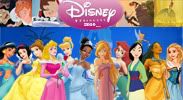Marky_198 wrote:I guess what I want from a home video release is the film looking like it was made in the year it actually came out. 1959 in this case. No artificial sharpening. No adjusted colors. Nothing in this new release says: 1959 Everything screams: 2008!
Again we're just going to go around in circular logic here. You don't know what it looked like in 1959 because you weren't there. End of.
And even using the original negatives doesn't mean the original colours were used - producing a print from a negative is a photochemical process and its not like just pressing a button on a computer. Just like colours can be altered digitally with sliders, colours can be altered photochemically by the chemicals used, the exposure and other variables.
See Robert Hariss here
http://www.widescreenmuseum.com/rah.htm
Some people who work in preservation do not know what a preserved or restored film should look and sound like. This is exacerbated by the fact that few titles have an original print. Without a reference print, you have no idea what the intentions of the filmmakers were regarding color, density, contrast or even major points like "day for night" scenes. When a reference print is available, it may not be an approved print. It could well be left over from a reissue or have survived as a lab reject.
Also its likely most prints sent to theatres were prints of prints - therefore analogue copies of copies. We'll never know how many generations of copy - especially for re-issues from the 1960s 1970s and 1980s. Unlike digital copying analogue copys do result in imperfections. Maybe the 1959 première did have a ultra sharp image being a first generation copy, while copies sent to provisional theatres and overseas didn't and were perhaps 2nd or 3rd generation copies.
The funny thing is that people always think they have the best knowledge in hands, because they don't know any better. People are unable to see beyond the technology and evolution of today. Years ago, when Sleeping Beauty on dvd was presented on dvd as the "restored to it's orignal brilliance" "looking exactly like it did when it came out", I told people, "Just wait, in many years it will come out again, looking completely different and then they will say again that it looked like it was when it came out, and that the earlier version was a mistake". They told me I was crazy (because it was the modern year 2003, technology was perfect, right?) but it turned out I was right. And I’ll say it again. In 2016 there will be a version of Sleeping Beauty released that will look completely different than the recent version, restored and looking "just like it was when it first came out" thanks to the (yet to discover) technology they simply didn't have back then in 2008. Why would we believe that this is the best it can get? Just because it's 2008? And in my opinion "best" means more than artificially sharp and bright and modern.
So what would you expect Disney to have said for the SE DVD. "It’s the best we could do. Honest". Claims like this have to be taken with a pinch of salt. I remember Gran Turismo 1 on the PS1 boasted it used 98% of the Playstations processing power. It didn't stop the much more advanced Gran Turismo 2 coming out on the same platform later with hugely improves physics and audio/visuals. It's just marketing speak to promote the product. And no, in 2003 or 2008 or 2099 technology is never perfect.
Again from the same page Robert Hariss said this (from 1993 by the way) (emphasis mine)
One final point on this subject. Once materials are preserved properly, that does not then mean that the original nitrate should be junked. I have to assume that today's technology will be constantly supplanted in the future with new means of creating even higher quality preservation materials. You never want your finest surviving asset to be a dupe when you can have the luxury of going back to an original element.
Don't confuse Marketing boasts with the integrity and knowledge of the actual people who do the restorations. Of course there's also other steps in getting a restored film onto a DVD or Blu-ray – simply encoding it and putting it onto a disc leaves it open to colour, sharpness, noise reduction, either by design or accident. It doesn't mean the restorers are being loose or careless with their work.
If Disney mess up a DVD release, the "restoration" itself may not be at fault at all - and it seems wrong to blame the people who work long and hard on the restoration automatically.
Finally again from Robert Hariss
The large format films, 70mm, Technirama, etc., are in the highest risk group. Since most 70mm prints were made directly from the camera negatives, many are extremely worn. Most large format masters are untested. They probably will not register very well and they generally are not backed up by large format color interpositives of any vintage no less recent. and
If someone 15 or 20 years ago had made decent materials on pictures like Casablanca, they would look a lot better than they do today, and they would not have to be constantly redone.
Of course that's not to say Disney's Sleeping Beauty is one at "Risk" (but it is 70mm) or that it has insufficient materials like Casablanca, but perhaps it does. Robert Hariss himself on that page in 1993 admits some films (such as Casablanca) will require contant re-work. The fact some will are known about and have been known about for a long long time.
If you read the reviews for the HD DVD of Casablanca, you'll see many people raved over it. But it doesn't mean a rework with better technology ten years from now wouldn't be better. In fact, Hariss implies it will be.



